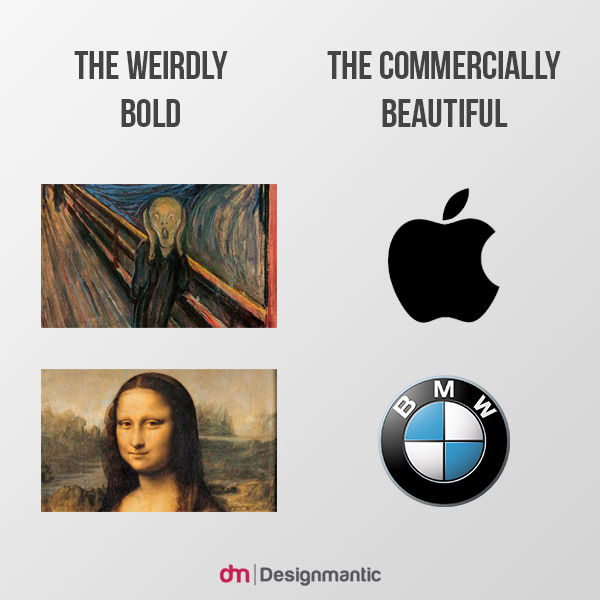James Victore posed a pretty interesting observation about the creative types out there. According to the NYC-based Mr Victore,
‘Many of us have attributes about our personality that are great, but are afraid to put that in our work for fear of being weird. We want our work to be better and more personal, but we want to fit in and avoid getting in trouble, too. The result is that our work can suffer.’
Now that brings us to the question of the day. Weird design is good or commercial design when it comes to branding in the 21st century?
As a designer, what works better in the workplace – the whole shebang or just you and some ironclad corporate-minded discipline? Is it ok to bring in all the weird and cool personality quirks that make your design work on so many levels? Or do you have to leave those ‘disruptive’ influences at the door once you enter Officeville?
Some people say that the Mona Lisa painting was the result of Leonardo Da Vinci bringing his unique sensibilities into everything he did. But Dennis Dickerson begs to differ. Here’s how he separates the weird from a design standpoint:
‘Weird ideas can lead to good design and weird is great for brain storming. But if you submit a weird design as final, you’ve stopped too soon. Every aspect of a design should be considered and analyzed, and the final decision highly scrutinized.
The truth is, people don’t like weird things. Normal people don’t like weird people, they are shunned and ridiculed. We roll our eyes and ask, "Was that guy struck by lightening or something?" And we don’t buy weird furniture, appliances or cars. Except for the French.’
Keshia Price likes to think otherwise when it comes to weird design ideas.
‘True, most people dislike weird things, but again, what is ‘weird’ can be subjective. I used to work at a museum that featured news feeds from other countries, one of which was Japan. I thought a lot of their commercials and game shows were weird (to put it mildly), but that could be a cultural thing.
And while people dislike weird, they do, on occasion, like things that break from the norm, especially when done right. Business cards can be a good example; look up "unusual business card examples" and you’ll see a wide range of card ideas that can be considered weird, but depending on the situation, would probably help the card holder get attention. It’s all about the right design at the right time.
John Caruso sums up the whole debate over weird vs. commercially acceptable design quite succinctly, putting an end to what the people want to see in the marketplace today as far as design is concerned:
‘While we can and should encourage ‘experimenting’ with styles and solutions — the successful, if not responsible designer will only infuse their unique style and vision with one goal in mind: appeal to, and engage the target audience to take action.
And there’s nothing ‘weird’ or arbitrary about that.’

